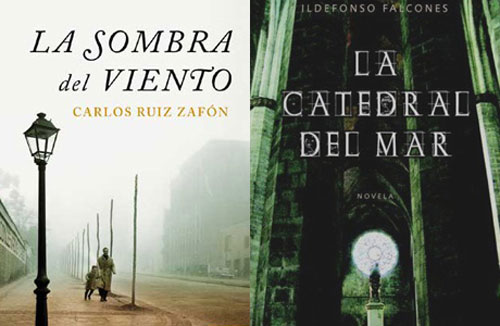Many tourists in Barcelona are just satisfied by proving that they walked into La Sagrada Familia Church, their hands touched Antoni Gaudi’s dragon or that their palate tasted the absinthe at Marsella Bar, while they remembered Hemingway. Other tourists play the role of being literary detectives. Their mission lies in finding the places that inspired writers like Manuel Vázquez Montalbán, Ildefonso Falcones or Carlos Ruiz Zafón. Barcelona’s literary routes invite us on an excursion through the city in fiction times.

Some tourists make a journey back in time to the 1970’s, to get into the character of the detective Pepe Carvahlo, the hero of Manuel Vázquez Montalbán’s novels. From Galicia originally, his character is known for his like for pa amb tomàquet as well as for the girls who offered sex in the streets of the Chinese Town, which was the former name of the Raval Neighborhood. The fans of crime fiction know that the Boadas Bar has served as the scene of their stories and they will not hesitate to order the Mediterranean menu Pepe Carvhalo in the Casa Leopoldo Restaurant. Other tourists will book a room at the Hotel Barceló Fraval, a building made of iron that has a terrace and pink lighting at night, whose structure is located in a square named Manual Vásquez Montalbán. Since the moment the novel “Olympic Sabotage” was launched, which is about the transformation of Barcelona before the Olympic games of 1992, the cityscape that Carvhalo fell in love with, has metamorphosed.
Booking a ticket for a literary route is wandering around the current city of Barcelona, but from the point of view of another person or rather a character, and in a different period. Walking through the streets of El Born imagining the young Arnau Estanyol as he grew up among the Ribera fishers during feudal times or revealing anecdotes of the construction of the Santa María del Mar Chruch is the purpose of the literary route “La Catedral del Mar”. With the help of a passionate guide who speaks through a megaphone in three languages, you can visit the same places as the protagonist of Idelfonso Falcones’s Novel.
Fiction also seized modernist and post-war Barcelona with Carlos Ruiz Zafón’s saga “La sombra del viento” (The Shadow of the wind) and “El juego del Ángel” (The Angel’s game). Daniel Sempere, Julian Carax, Fermín Romero de Torres, characters of intrigue, take on another dimension with a walking tour through mystical scenarios like Santa Ana Street, Arco del Teatro street, Plaza Real, Las Ramblas, Sant Felip Neri Square or Montcada Street, where the Picasso Museum is located. The Gothic Quarter is the perfect place for a suspense, love and literature story.
The magical or cheerless stories, whose backdrop is Barcelona, are a tribute to the city. For Jorge Luis Borges (1899 – 1986), Barcelona is “Ugly, vulgar and strident”. “A”, the character created by the Catalan writer Quim Monzó, does not enjoy Barcelona either. He is a teenager who is so bored with Barcelona’s nightlife, that he prefers the endorphins generated by the feel of wanting to escape from a party night. Regarding the 12 essays “I hate Barcelona” (2008), they reflect the metamorphosis of the city: the tourist park, the Mecca of hotels, reformed neighborhoods and nostalgic villages. We can even believe that the city was more appealing during its period of servitude. As Woody Allen said in his movie “Midnight in Paris”: “We always think that life would have been better in another era”.

Going for a literary tour is to dive a couple of hours in Barcelona´s past, portrayed beyond the columns of the Sagrada Familia to forget the current noise to travel in fiction. Whether you read the novels that inspire those walks or not, just enjoy it. Rent apartments in Barcelona and discover another side of its central districts.
 Translated by: Hans
Translated by: Hans

 English
English Deutsch
Deutsch Español
Español